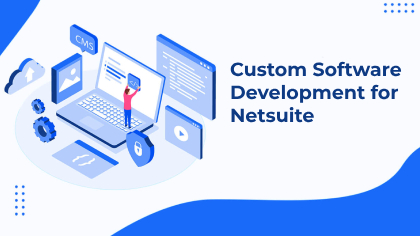There are many reasons a small business might close, but a failure to focus on the key aspects of financial management is a common one. Financial management is a broad term used for all activities related to bookkeeping, financial projections, budgets, financial statements, and financing. The advantages of sound and accurate financial management practices cannot be emphasized enough.
In short, avoiding the common financial challenges that threaten success for every small business takes sound financial management practices. With knowledge of the most common issues, your business can make plans and put solutions in place that help avoid problems.
There are nine issues that almost every business— new or otherwise—confronts at one time or another and addressing them is crucial for any business to function. Addressing them early on and knowing how to respond to these challenges will help establish your business on solid financial ground.
1. Cash Flow Management
Managing liquidity is a major concern for all new businesses as they try to bring in enough money to not only cover monthly bills but accumulate cash to invest in growth. It’s a simple concept, but the execution is often not so straightforward. Accounts Payable and Accounts Receivables are involved in Cash flow. By accelerating the cash-to-cash conversion cycle, or how quickly a company turns money it has spent on goods or services into cash from customers, companies ensure consistent access to capital.
Rethinking your invoicing processes can go a long way toward speeding up that cycle. Sending out invoices quickly with a breakdown of costs, clear payment terms, available payment methods and any penalties for late payment can go a long way toward receiving faster payment. Offering discounts for early payment if you don’t already can also reduce the cash-to-cash cycle. Companies should also study their data to understand the payment terms and timing of invoices that work best for your business, as they can vary greatly.
Accounting software that automatically sends out invoices ensures timeliness, accuracy, and consistency, which can reduce days of sales outstanding (DSO). This system also holds all the data necessary to see current and projected cash flow so you can plan and adjust accordingly. On the accounts payable (AP) side, an accounting system puts all your invoices in one place and can send out reminders to help you maximize discounts for early payments. Automated reporting on spend with specific suppliers can also help negotiate better payment terms to keep more cash on hand longer.
2. Paying Bills on Time
Everyone wants to get paid on time. payments late can cost a small business dearly. Damaged supplier relationships, being cut off from needed services, and constantly running debt can all profoundly damage a company’s financial health. A system that can automate payments saves significant money and time; it also reduces data entry errors and helps prevent fraud through a system of “touchless” controls that run behind the scenes. These functions, combined with AP automation software, translate into important benefits.
AP automation software helps reduce the number of manual tasks that finance teams must perform. For example, instead of manually managing vendor invoices and recurring expenses, organizations can use an automated system to organize their invoices, manage the approval process and send payments to vendors. With better access to data, you can ensure you’re taking advantage of optimal payment terms to hold onto cash longer for better liquidity or gain discounts for early payments. Therefore, paying bills on time is the second primary financial challenge faces by businesses.
3. Securing Capital
The most common types of external financing sought by small businesses are loans and lines of credit. Small business owners most often use a personal guarantee to receive financing, relying on an owner’s credit score. Additionally, some businesses would need to find new funding or reduce costs if their business didn’t see revenue for two months.
Regardless of the type of funding your business is pursuing—venture funding, private equity, government-backed loans, bank loans, or financing through personal means (friends, family, and personal funds), access to capital is critical to realizing business goals. Even if you have cash on hand every month to pay the bills—with some leftover—you’ll still want access to capital to fuel hiring plans, expand into additional markets, introduce new products, and more.
When your business can easily show accurate financials, it’s much easier to secure funding—and quickly. Ensuring cash flow statements, Profit & Loss statements and the balance sheet are all recent, accessible, and auditable is a major advantage when seeking capital. Banks and investors often require frequent reporting on current financials.
What’s more, the software makes it fast and easy to provide detailed financials and calculate common key performance indicators (KPIs) , such as all details on accounts receivable and accounts payable, cash position, revenue, and key ratios such as debt-to-equity ratio. These will prove extremely difficult and time-consuming for your accounting and finance departments to assemble manually and do it frequently.
With the right accounting software, a company can eliminate many manual chores required to close the books, such as transferring journal entries into the general ledger and correcting human error, speeding up the month-end close process.
4. Paying Off Debt
Entrepreneurs are rightfully proud of “bootstrapping” their way to success, so it’s not unusual for business owners to take on debt to launch their businesses. But there is such a thing as too much business debt. Maybe they ran up a little too much money on a personal credit card, or perhaps their local banker extended a line of credit that’s now used up and commanding a high-interest rate.
Whichever debt vehicle they take advantage of, these situations can have significant short- and long-term impacts on the company. For example, it can take time for a firm’s positive cash flow to start, and in the meantime, there are employees, suppliers, and overhead to pay.
“If you don’t already, consider automating your payroll processes with a solution that’s integrated with your accounting system. Payroll platforms help calculate earnings, deductions, company contributions, taxes, and paid time off, while also easing the burden of employment forms, direct deposit, and more.”
Several strategies for getting out of debt depend on having easy access to accurate financial data. The business can identify areas where it can reduce costs within its operations—and take steps to reduce or rein in spending. Refinancing to pay off debt or consolidating loans is also an option. When refinancing, you’ll need to provide accurate financial statements and detailed accounting information.
It’s much easier to make these decisions when the business has access to and can trust the data. Automating accounting processes allow leaders to easily see up-to-date cash positions, key financial ratios, and more, helping them make plans to get out of debt, or avoid getting there in the first place.
5. Closing the Books
The financial close process can be difficult. Even small businesses may have hundreds or thousands of accounts to track and reconcile, and it only gets more complicated as businesses grow. In the financial close process, closing the books is the last step. It has two objectives: Closing the books resets temporary accounts to zero and locks in the prior period’s balance. Temporary accounts also referred to as nominal accounts, are those found on the income statement to accumulate the period’s revenue, expenses, gains, and losses. The net result is transferred to the balance sheet as part of the second objective: updating retained earnings to reflect that period’s results of operations. Retained earnings is an equity account found on the balance sheet, which holds undistributed profit or loss. It’s an important account since it represents funds available for reinvestment.
This improves the reconciliation process by automatically aligning data from discrete sources, spreadsheets, and systems. Accounting software can also quickly detect errors so they can be resolved as quickly as possible. ERP systems can bring in data from other business systems to enable all departments to work from the same up-to-date data sources. This makes it easier for accounting teams to access key financial data in real-time, instead of waiting for peers to share the information necessary to complete a close.
6. Meeting Payroll
Consistently paying employees, payroll taxes, employee health benefits, and the owners’ salaries from available cash is a strong indicator of financial health. Payroll software ensures a solid employee experience and helps employers maintain compliance with labor laws, which change often and can be complex to keep track of.
7. Use a Budget
If you’re running your business by your instincts, just hoping that there will be enough in the bank to pay the bills at the end of the month, it won’t take long to wind up with more debt and financial responsibilities than you can handle.
Companies need to develop a budget and then spend within their means. However, there should still be some flexibility to adjust as conditions change—it’s difficult to predict what expenses will come up and exactly how the money will be spent ahead of time. A budget should be a living document, not something you write and then throw in a virtual (or literal) drawer.
At a minimum, every small business budget should include these five elements:
• Fixed costs
• Variable costs
• One-time costs
• Cash flow statement
• Profits (what’s left after all of the above are factored in)
Certain accounting software has basic budgeting functionality built-in that ensures the most accurate, up-to-date data is being used and makes building the budget less of a chore. It also eliminates problems with version control that happens when passing around and merging spreadsheets from different departments during budgeting season.
An accounting solution can also provide an up-to-the-minute view of your spending, including where you’re under and over budget, so decision-makers know what changes to make in response. If sales of a certain item that’s expensive to ship are spiking, for example, a bigger chunk of the overall budget may need to go toward fulfillment and shipping.
8. Tracking Key Metrics/Ratios
Keeping a close eye on a few areas will help businesses avoid financial trouble by providing an early indication of potential problems.
These include:
• Profitability: The income statement (or profit and loss statement) helps a business see its overall profit or loss during a given period. Use the data on this statement to calculate profit margins, including the gross profit margin, operating profit margin, and net profit margin.
• Efficiency: Some metrics indicate how well your company is using its capital and assets to generate revenue. For these metrics, you’ll need information from your income statement and balance sheet, which is a snapshot at a given time of how much your company owes and how much it owns. Metrics that provide a measure of efficiency include return on assets, working capital ratio, and working capital turnover.
• Solvency: To measure solvency, or your company’s ability to pay its long-term debts, use the cash flow statement, which measures how much cash enters and leaves your company. Calculating operating cash flow will indicate how well the company can cover its current liabilities.
Business leaders need constant access to these metrics and ratios, and they need to update in real-time because things can change quickly. The right accounting system offers that with customizable dashboards and KPI trackers that highlight the most critical information.
9. Calculating and Paying Taxes
Applying changes in tax laws is a common concern for accounting teams. Accounting teams must make tax changes a focus, especially understanding total tax liability and navigating shifting trade and tariff policies.
Effectively navigating the tax law changes can ensure more funds are available to weather other business challenges ahead. Digitized, accurate and easy-to-access records with accounting software will make a complex tax year more manageable, especially when it comes to managing accurate deductions for business expenses. A system that can calculate and remit taxes will continue to show its value as regulations keep shifting.
How STREAMS can Power your Success?
The benefits of accounting software for a growing business are extensive. Accounting software gives you visibility into all revenue and expenses and allows you to track and analyze key financial metrics over time. Additionally, this software can automate accounts receivable processes to help reduce days of sales outstanding and increase cash flow. It also helps businesses track bills and makes the most of their payment terms to optimize cash flow, all while maintaining strong relationships with key suppliers. Such a system makes it easier for companies to provide financial statements and other essential information required to secure financing and satisfy compliance standards.
NetSuite financial management is built on the same platform as its other business applications — including order management, inventory, CRM, and commerce—so you have access to all organizational data in one place. NetSuite financial management solutions expedite daily financial transactions, ensure compliance and accelerate the financial close. The cloud platform delivers real-time visibility into the financial performance of any business, from a consolidated level down to individual transactions.
STREAMS is a leading NetSuite service provider in North America. Our highly qualified team of experts in particular subject matters Accountancy, Business Financing, Corporate Tax and Regulations, Software Development, NetSuite Customization, and NetSuite Support engaged with leading and growth-oriented multi-national companies to work on different modules.






Leave a Reply